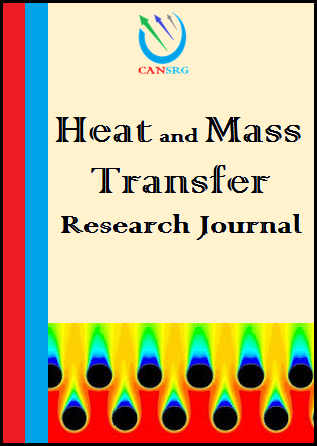
CanSRG

Heat and Mass Transfer Research Journal (HMTRJ)
Research Article
Microchannel Cooling Performance Evaluation of Al2O3, SiO2 and CuO Nanofluids Using CFD
Department of Mechanical Engineering, University of Alaska Fairbanks, P.O. Box 755905, Fairbanks, AK, 99775-5905, USA.
Submitted: January 9, 2020; Revised: March 7, 2020; Accepted: April 16, 2020
Abstract
In this study, the performance of a microchannel heat sink (MCHS) filled with various nanofluids and the corresponding base fluid without nanoparticles are examined using a three-dimensional conjugate heat transfer and fluid dynamic finite-volume model over a range of conditions. The model incorporates a fixed heat flux of 1,000,000 W/m2 at the base of the solid domain. The thermophysical properties of the fluids are based on empirically obtained correlations, and vary with temperature. Nanofluids considered include 60% Ethylene Glycol/40% Water solutions with CuO, SiO2, and Al2O3 nanoparticles dispersed in volumetric concentrations ranging from 1 to 3%. The flow conditions analyzed are in the laminar range (50 ≤Re ≤ 300), and consider multiple inlet temperatures. The analyses predict that when compared on an equal Reynolds number basis, the 60% EG/3% CuO nanofluid exhibits the highest heat transfer coefficient, and the largest reduction in average base temperature. At an inlet Reynolds number of 300, and an inlet temperature of 308K the nanofluid is predicted to have an average heat transfer coefficient that is 30% higher than that of the base fluid, while the average temperature on the base of the heat exchanger is 1K lower than that of the base fluid. In contrast, the inlet pressure required for these entering conditions is 192% higher than that for the base fluid, while the required hydraulic power to drive the flow is 366% higher than that of the base fluid.
Keywords
Microchannel Cooling; Nanofluid; CuO; SiO2; Al2O3; CFD.
Downlaod Full Text >>
This work is licensed under a Creative Commons Attribution 4.0 International License.